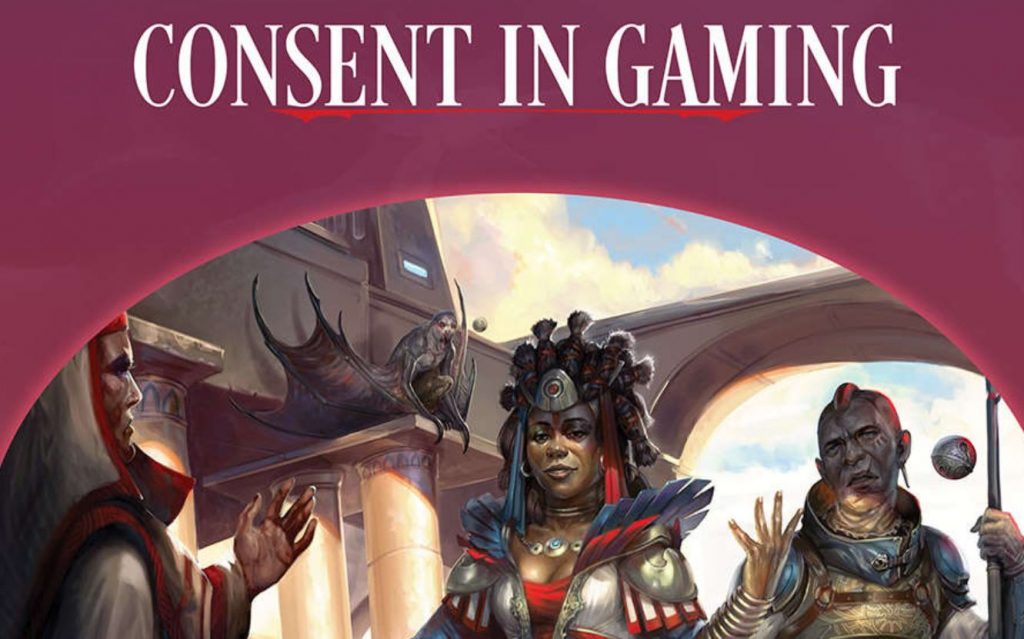Consent in Gaming is the perfect ebook for tabletop groups
When a friend sent me a link to a book called ‘Consent in Gaming’ by Sean K Reynolds and Shanna Germain, I admit that I looked over the blurb and title very quickly and went straight to the comments. After all, when you see something that actually seems to put caring about people on the internet, you’ll no doubt find cries of ‘snowflake’ straight after it.
And lo and behold, there were a ton of those sort of comments. It’s no surprise, so I won’t act shocked. However, what was a pleasant surprise was the comments that acknowledged how important consent is in the tabletop community.
“This product provides a useful framework for ensuring everyone at the game table is opting into an experience that will be fun for them. It provides solid advice in an easy to read, direct manner and offers a simple checklist that can be distributed to players before the game or before starting the session so the choices can be made ahead of time and, potentially, anonymously,” said one review.

Unfortunately, consent in gaming has always been a tricky subject for a fair few. Sometimes it’s just that the group is full of people you don’t know, and you’re not sure what your boundaries are. And sometimes it’s just that people are horrible and don’t give a damn about what concerns the people around them.
If it’s not obvious, don’t play with those kinds of people and find a better group.
What makes Germain’s and Reynolds’ book such an asset to tabletop gaming is that it introduces what ‘consent’ is, and how best to approach scenarios (such as explicit violence and sexual acts) with your players. Often people consider tabletop gaming, particularly tabletop roleplaying as a GM versus player game. This is not true, and consent is a huge part of playing a game together that everyone will enjoy.
Consent between players and the GM can be introduced in various other ways, such as filling out a sheet of things you may not want to encounter in your games (without filling in your name) and handing them in. Or, if you’re comfortable with each other, using the X card. The X card is played in a situation where a player is uncomfortable and wants to move on.
These simple tips and tricks in this book are paramount for tabletop groups. It doesn’t stifle creativity, it encourages it.
And in a roleplaying tabletop group, isn’t that what you want?
Check out Consent in Gaming for yourself, and Gayming Magazine for more tabletop opinions and features.







